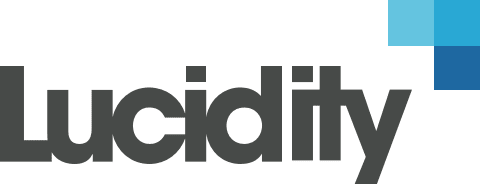
Recently at the Lucidity Network I spoke to fundraiser turned leadership, team and career coach Jennifer McCanna about influencing and managing up.
A big part of any new project or change process (in fact anything involving people) is convincing others that it’s a good idea. You can’t expect anyone to like your new idea or project and therefore making any type of change will involve an element of influencing.
Sometimes when we talk about ‘influencing’ it can feel uncomfortable, like it’s a dark art, manipulative or political. If you ever work with others you will, whether you realise it or not be influencing their behaviour and decisions. It’s not just at that moment when you want someone to get involved in your project, back your idea or see your point of view, we are influencing others all the time through every interaction that we have. We are more likely to influence or be influenced by those that we know, like and trust. It’s your choice to be deliberate rather than accidental about building good relationships. You might even feel more comfortable substituting ‘influencing’ with ‘building good relationships’ – it amounts to the same thing.
Managing up is not just your relationship with your boss; it’s the relationship you might need to have with any senior colleague. It’s easy with senior colleagues to fall into a parent-child relationship. Managing up involves breaking that pattern and having a more equal two-way dialogue. It’s the process of using initiative and communication to lighten your managers, or other senior colleagues’, workloads. It’s about supporting them by identifying and sharing ideas for growth and helping them to achieve their goals. It’s not about doing your managers job, dodging systems and processes or trying to be the boss before you’re ready (and its also not about sucking up).
Jens first tip when it comes to influencing and managing up is to understand your strengths, style and how you come across to others. Until you raise your self-awareness it’s really hard to work on building effective relationships with others. Next, think about the other person. Get in their shoes. What do they what from you? Right now? Do you know? Have they told you? (Hint, if they haven’t then ask them) What’s going on for them specifically as well as what’s going on in the wider context? What do they care about? What are they trying to achieve? What are their drivers? What’s their personal style? What’s their preferred communication style? Are they happier in the mornings or the afternoon? By understanding them, you can adapt your style and ask to meet their needs.
To effectively understand someone else you need to be able to really listen. Listening skills are important and often overlooked. And listening to understand is different from listening to advocate for your own agenda. If you know what’s going on for someone you have a much better chance in positioning something in a way that appeals to them. Spend as much time as you can just listening.
We’re in our head a lot of the time and we often intellectualise about a situation, however the best way to really increase your understanding of the other person is to understand how they feel. Jen and I both do this with the individuals and teams we work with by asking them to role-play being the person they are hoping to influence. Asking questions like ‘How do you feel right now?’ ‘Tell me what life is like for you right now?’ and answering as the other person changes the dynamic completely and creates empathy. One person I did this exercise with could feel, when they played the part of the person they were influencing, how their style had been (inadvertently) threatening the other person. They went back to the person after being them in the role-play and shifted their approach. They got a different response that opened up a dialogue rather than closed it down (which was happening before).
Jen introduced us to another way to see a situation differently by using random objects. Here’s how. Pick up some things that are on your desk, for example, a mug, a pen and a stapler. Use the random objects to play out a scenario with those that you are hoping to influence. For example, the pen might be your director of finance, the mug might be your manager and the stapler might be your director of HR. Place them on the table. Think about how close they are to each other depending on how good their business relationship is. Move the random objects and see what happens. Find a paperclip (that’s you!) to add to the mix. What happens? Ask ‘what if?’ questions. What if we moved the stapler closer, what if we moved the pen nearer the mug? Where are you now? Where do you want to be? Have fun playing with the patterns. Does it give you insight about where you need to invest your time in building relationships?
Think about whom it’s important to have good relationships with to get your job done. Who’s powerful and who will help you progress your projects effectively? Sometimes who you are trying to influence is not linear, it’s not the person at the top of the organisational hierarchy. Alternative structures exist outside of organisational charts. Think about informal relationships, for example, who’s on the softball team, who smokes outside, and who manages the diaries of the senior management. It might be that those are the people to ensure you build good relationships with to influence others.
If you’d like to hear this interview as well as a whole host of other experts on topics including innovation, creativity, making time to think, resilience, failure, networking skills and personal brand then you can find them all at the Lucidity Network. There’s more information and how you can join here.
